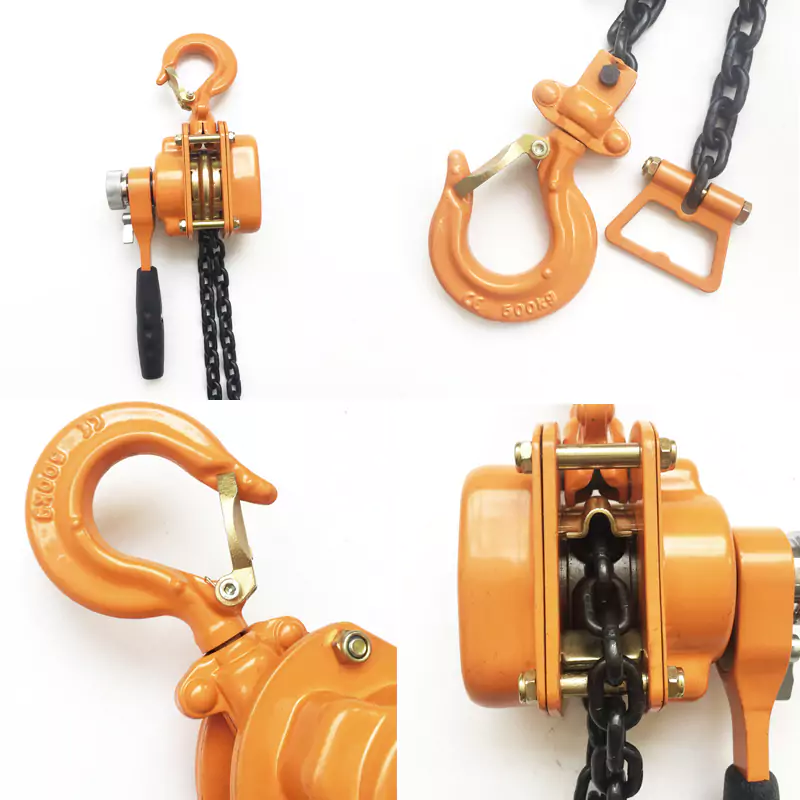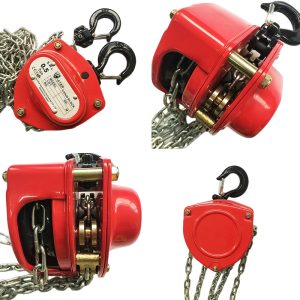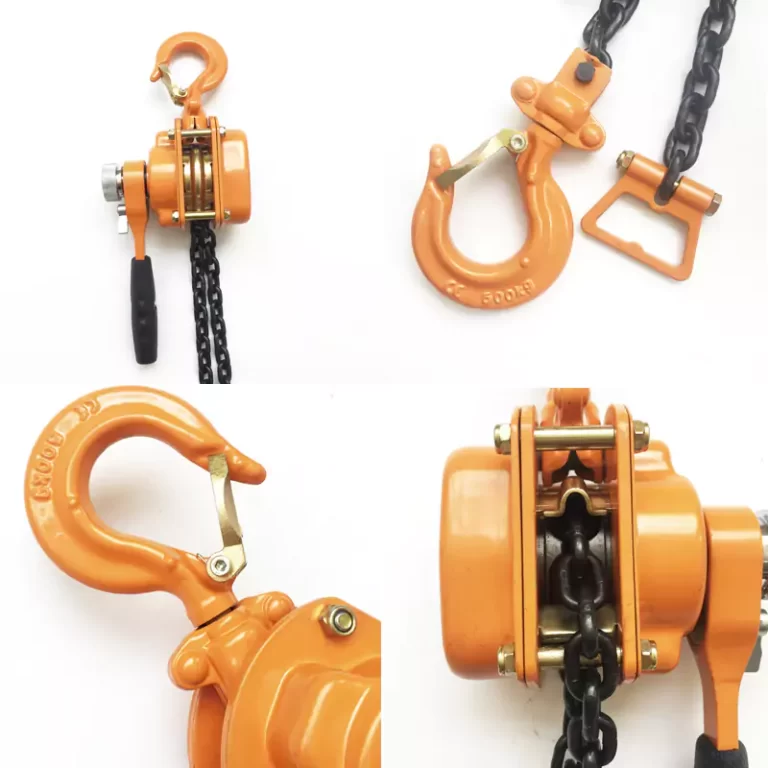Chain hoists are essential tools used across industries—construction, manufacturing, logistics, mining, and beyond. These devices enable the lifting and positioning of heavy loads with reduced manual effort, leveraging mechanical advantage to improve safety and efficiency. However, the traditional design of chain hoists often assumes a “one-size-fits-all” model, with little regard for the varying physical capabilities, body types, gender differences, and accessibility needs of a global workforce.
In the 21st century, industrial equipment—including lifting devices—must evolve to become more inclusive and user-friendly. Inclusive design ensures that products are accessible and operable by the broadest possible range of users, regardless of age, gender, disability, or strength level. This article explores how chain hoist design can be adapted and reimagined to accommodate the diverse capabilities of operators worldwide.
1. Understanding Inclusivity in Industrial Equipment Design
Inclusive design, sometimes referred to as universal design, is the process of creating products that are accessible to as many people as possible, regardless of physical or cognitive abilities. In the context of chain hoists, this means considering:
-
Operator strength and endurance
-
Hand size and grip strength
-
Left- or right-handedness
-
Visual and auditory impairments
-
Cultural and ergonomic differences
Inclusive design is not about compromising performance, but about expanding usability—so that all workers can operate the equipment safely, comfortably, and efficiently.
2. Challenges Faced by Diverse Users of Chain Hoists
Before improving inclusivity, it’s essential to identify the barriers some operators face:
a. Physical Strength and Fatigue
Manual chain hoists require users to apply significant effort through a hand chain. Operators with lower upper body strength—including women, older workers, or people with physical limitations—may find this difficult or fatiguing.
b. Grip and Hand Size
Chains and handles are often designed for “average” male hand sizes. Smaller hands or reduced grip strength (due to arthritis, injury, or age) can make operation uncomfortable or unsafe.
c. Height and Reach
Tall hoists or poorly positioned hand chains may be out of reach for shorter users, making it hard to maintain ergonomic posture.
d. Cognitive or Sensory Impairments
Auditory or visual indicators on electric hoists may not be accessible to those with hearing or vision loss.
e. Gender and Cultural Norms
In some regions, women are increasingly entering industrial roles. Equipment must move beyond outdated assumptions of who the “typical operator” is.
3. Key Principles of Inclusive Chain Hoist Design
To build a chain hoist that is more inclusive, manufacturers should apply these design principles:
a. Flexibility in Use
Allow for varied ways of operation (e.g., one-handed or two-handed use, compatibility with left- or right-hand dominance).
b. Simple and Intuitive Operation
Ensure operation requires minimal training and is visually or physically self-explanatory.
c. Low Physical Effort
Design to minimize strength requirements for lifting, pulling, or handling the hoist.
d. Perceptible Information
Make sure important indicators (like load limits, brake engagement, warnings) are clear through multiple modes—visual, tactile, and audible.
e. Ergonomic Comfort
Support neutral body postures and reduce strain across a range of body sizes and abilities.
4. Practical Strategies to Improve Chain Hoist Inclusivity
a. Redesigned Hand Chain Mechanisms
-
Lighter-pull gear trains can reduce the force needed to operate manual hoists.
-
Optimized sprocket teeth and precision bearings can lower friction, making pulling easier.
-
Soft-grip hand chain handles improve comfort and reduce strain on small or arthritic hands.
b. Height-Adjustable Hand Chain Loops
-
Chain hoists with adjustable or retractable chain loops make operation accessible regardless of the user’s height or the hoist’s suspension point.
-
Adding tensioning weights or return springs ensures the hand chain is always within reach.
c. Dual-Side Operation
-
Allowing operation from either side of the hoist accommodates both left- and right-handed users, and improves usability in tight or obstructed spaces.
d. Visual and Tactile Labels
-
Use color-coded load limit indicators, embossed directional arrows, and high-contrast warning signs for users with limited vision or in low-light environments.
-
Include braille markings or raised symbols for critical operational functions.
e. Motorized Assist Options
-
For manual hoists, provide low-voltage motor attachments or battery-powered assist units to help users with limited strength.
f. Improved Brake and Clutch Systems
-
Use self-activating load brakes that don’t require manual engagement.
-
Integrate overload protection that automatically disengages the lift, reducing the risk of misuse by inexperienced users.
5. Inclusive Design in Powered Chain Hoists
Electric and pneumatic chain hoists can also be enhanced for inclusivity:
a. Simplified Controls
-
Use large, intuitive pushbuttons with clear symbols.
-
Pendant controls should be lightweight, non-slip, and color-coded for function.
b. Multiple Feedback Modes
-
Auditory alerts for power failure or overload
-
Vibration feedback for hearing-impaired users
-
Visual LEDs for operational status
c. Voice and Remote Control Options
-
Allow voice commands (using wearable tech) for hands-free lifting in complex environments.
-
Use wireless remotes with ergonomic grips to allow operators to stand at a safe or comfortable distance.
6. Inclusive Maintenance and Setup
Inclusivity doesn’t end with operation—it extends to setup and maintenance:
-
Tool-less hook latches simplify installation.
-
QR codes for video instructions offer visual guides that transcend language barriers.
-
Lightweight modular components can reduce the need for heavy lifting during installation or service.
7. Training and Cultural Considerations
Inclusivity also involves support systems, not just physical design.
a. Multilingual Manuals
-
Provide training guides and safety labels in local languages.
b. Pictorial Instructions
-
Use diagrams and universal symbols to reduce reliance on text.
c. Gender-Neutral Training
-
Encourage equal access to hoist operation training for all workers, regardless of gender or physical size.
8. Case Studies and Real-World Examples
a. Japanese Factories and Ergonomics
Japanese manufacturers often lead in ergonomic design, offering hoists with minimal pull force, low chain resistance, and handle attachments to reduce wrist strain.
b. Scandinavian Industrial Safety Programs
Some Nordic countries mandate lifting gear to accommodate a wide range of users, including older workers, resulting in hoists with motorized options and height-adjustable controls.
9. Benefits of Inclusive Chain Hoist Design
Designing with inclusivity in mind benefits not only the operator but also the employer and broader industry:
-
Reduced injury rates
-
Lower absenteeism due to fatigue or strain
-
Increased productivity
-
Better employee morale
-
Wider recruitment pool, including older workers or women
Most importantly, it fosters a more equitable work environment, demonstrating a commitment to worker well-being and safety.
Conclusion
As industries grow more diverse and globalized, the need for inclusive design in industrial tools like chain hoists becomes undeniable. The outdated model of designing for a narrow set of users must be replaced with a people-first approach that considers physical diversity, ergonomic needs, and usability across cultures and abilities.
By integrating inclusive design principles—such as adjustable operation height, reduced-effort mechanics, multisensory feedback, and intuitive controls—chain hoists can become tools that empower every worker, regardless of their physical strength or body type.
Inclusivity is not just about meeting regulations or avoiding injuries. It’s about building tools for everyone, creating a safer, more efficient, and more just workplace for all.




